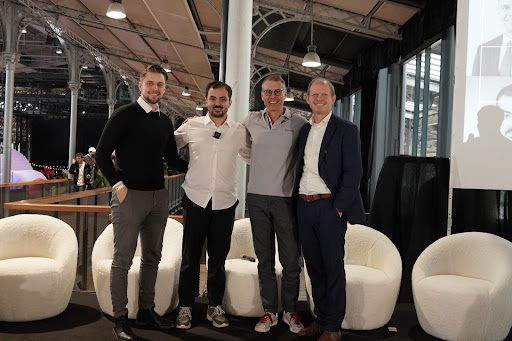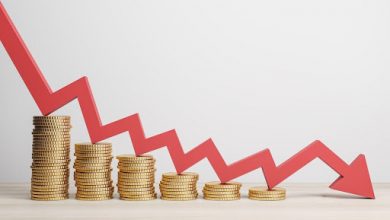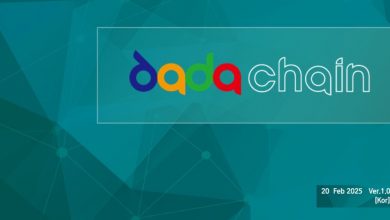Tokenization: Unlocking Liquidity and Reshaping Real-World Asset Trading


From left: Timm Reinsdorf, Co-founder & CEO of Particula, Ramzi Laieb, Co-founder of Carbonable, Stephan Lutz, CEO of BitMEX and Oscar Wendel, Founder & Chairman of Global Stratalogues
From skyscrapers sold by the square meter to carbon credits traded like stocks, tokenization is transforming the financial landscape. Tokenization of real-world assets (RWAs) is rapidly emerging as a transformative force in finance, merging blockchain technology with traditional asset markets. While tokenization has the potential to enhance liquidity, its complexities demand careful navigation. Industry leaders at the RWA Summit in Paris, moderated by Oscar Wendel of Global Stratalogues, discussed the evolving landscape, legal hurdles, and the future of tokenized assets.
Breaking Down Buildings: The Promise of Fractional Ownership
“Think of it as securitization 2.0,” explains Stephan Lutz, BitMEX’s CEO, leaning forward with enthusiasm. “It’s fundamentally about connecting assets that need financing with investors hungry for returns.” The game-changer? Fractional ownership. “Imagine selling square meters of a Manhattan building to investors in Tokyo, London, and Dubai,” Lutz says. “Suddenly, your local real estate market becomes global.” But here’s where it gets interesting: blockchain solves the trading piece of the puzzle, but the holy grail—transferring legal ownership digitally—remains tantalizingly out of reach.
The Hidden Complexities: Not Just Blockchain with a Bow
Timm Reinsdorf, who co-founded Particula to provide real-time ratings for tokenized assets, cuts through the hype. “Everyone focuses on the blockchain aspect, but tokenization fundamentally changes all major product features,” he explains. “You need real-time price discovery, regulatory clarity, and seamless integration between on-chain and off-chain data.”
The reality check? While stablecoins and tokenized bonds have found their footing, complex assets like private credit and real estate remain challenging territory.
“Think about it,” Reinsdorf continues. “Before you even assess the underlying asset, you need to understand what the token actually represents—is it liability? Ownership? Or nothing at all?” His advice: always start with token-level scrutiny before diving deeper.

Stephan Lutz speaks at RWA Summit in Paris
Carbon Credits: When Transparency Isn’t Enough
Ramzi Laieb, Co-founder of Carbonable offered insight from the environmental sector, “Carbon credits are incredibly complex,” he says. “Blockchain helps with transparency, but what’s more crucial is verifiability.”
“When a company claims its product is carbon neutral because it invested in a nature-based project, how can you prove that the funds weren’t simply used for commodity speculation? You must demonstrate that these investments have genuinely restored and secured natural environments—ensuring they contribute to carbon neutrality for years to come.”
Ramzi Laieb introduces a concept that might sound like financial jargon but could reshape markets: “semi-fungibility.” It’s about striking the perfect balance between uniqueness (each carbon project is different) and interchangeability (investors need to trade them easily).
The Regulatory Maze: 40 Different Rulebooks
If you thought cryptocurrency regulation was confusing, tokenized real-world assets take complexity to another level.
“There are over 40 regulatory frameworks globally,” Reinsdorf sighs. “Investors face tokens representing the exact same asset but with completely different ownership rights across multiple blockchains.”
The result? A fragmented market where even sophisticated players struggle to navigate the rulebook—or rather, rulebooks.
The Price Discovery Problem: You Can’t Trade What You Can’t Value
“Let me tell you the biggest challenge,” Lutz says with the certainty of someone who’s been in the trenches. “Most complex real-world assets don’t have reliable 24/7 market prices.”
Unlike stocks or cryptocurrencies, you can’t trade real estate based on comparable transactions from last month. This creates a fundamental problem: without trusted price feeds, the derivatives and futures that make traditional markets liquid simply can’t exist for tokenized assets.
The Tokenization Trinity: Input, Throughput, Output
Lutz offers a framework that cuts through the complexity: “Think of tokenization as input, throughput, and output.”
- Input: The real-world asset (building, carbon credit, bond)
- Throughput: The tokenization and distribution process
- Output: The trading ecosystem that develops
But here’s where it gets messy: “The challenge arises when output feeds back into input,” Lutz explains. Imagine a dispute over a tokenized property—suddenly, you need both legal and technical solutions working in harmony.
Beyond the Hype: Making the Impossible Possible
As our experts wrap up, Ramzi offers a perspective that transcends the technical details: “Tokenization isn’t about replacing traditional finance. It’s about making things we couldn’t do before possible more efficiently.”
Whether it’s access to premium real estate, accelerating carbon credit verification, or creating entirely new asset classes, tokenization promises to redraw the boundaries of what’s possible in finance. The question isn’t if tokenization will transform asset trading—it’s when and how.
As banks and institutional investors dip their toes into these waters, one thing is clear: understanding both the incredible potential and the very real pitfalls will determine who thrives in this new era of asset trading.





